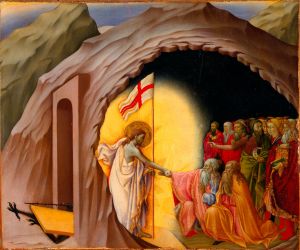
This summer, I plan to impart my love of art, science and culture to my children., even if it kills me (and believe me, I hesitated in saying “kills me,” just in case it actually does. I fear that then you, my gentle readers, might have an excuse to dance around and say, “I told you so, I told you so,” when you read my obituary in the Globe).
I’m a pretty realistic person. So I do know that mixing art/culture with children tends to pose some challenges. In preparation, I have turned to every corporate training I’ve ever had on leadership and management in order to figure out how I will co-opt my sons into going along with this plan. There’s a basic tenet in leadership training that goes something like this, “In order to improve your leadership effectiveness, meet people where they are at.” Introducing 3 boys to great works of art certainly will take some real walking in their shoes and where my kids shoes are at right now is basically Call of Duty Modern Warfare and anything about the Navy Seals.
Caveat on my summer: by summer, I mean the end of the blissful, seven daily hours of free care via the public school system. I know it is soon to be summer because this free care is coming to a screeching halt in 3 days. This is the summer of short exciting trips for each child interspersed with long periods of nothing scheduled. They requested it this way. I want to give you a sense of how I am now feeling about this state of affairs. Do you know the feeling when you hear your child is running water upstairs and you get all worried that the sink may overflow or they might drown? You know how you find yourself inching ever more towards the stairs in order to properly assess whether your growing anxiety is justified? Well, that is just about how I now feel about giving my kids this much say on how full their schedules will be for summer 2015. The closer I get to “summer” the more worried I am getting.
Today was the day I decided it was fish or cut bait time in terms of hatching a plan so that I can meet the potential onslaught of anticipated endless TV watching, mess and sloth head on. Basically, the plan looks something like this (please snicker quietly if you think this plan won’t fly – it’s all I’ve got and I’m holding onto it like a drowning rat on a small, floating plank in the ocean):
- Let them sleep as late as possible each day (Pipe dream, the sun wakes them by 7 AM but here’s to hope that that will stop when school’s out.)
- Eat and exercise while it is cool.
- Media at midday when it is hot.
- 2-3 days a week, in late afternoon/early evening when others are clearing out, we will hit a museum-periodically they are even free then; 1-2 days a week we will go to an afternoon movie, with a fun snack or meal thrown in as a bribe to encourage cooperation.
With mantra in hand: “The fun in the planning is meeting them where they are at. The fun in the planning is meeting them where they are at, ” I have dived in to research war museums, any techie museum where they think they are still on media even if they are now transported to within the 4 walls of a museum (e.g. Museum of Science, MIT Museum, Discovery Museum) and finally, art in a typical art museum that has something to do with violence, death, pestilence, and anything that looks even remotely like a zombie – I’m betting on the middle ages to fill my needs here.
Well, to my shock when I opened up an article: Harvard Art Museums in the NY Times about the recent remodel, it led me to the website which featured the (below) painting of Jesus v. Satan. And I actually think that that painting will appeal to zombie loving boys! Can’t you see Jesus saying, “Die, Satan” in Arnold Schwarzenegger’s voice? Or possibly Jesus in a perfect imitation of Clint Eastwood’s Dirty Harry, saying, “Go Ahead, Make My Day…” Already I’m seeing movie-art tie ins! Don’t judge – sometimes you’ve got to go to the more edgy material to hold their attention.

This image is by an artist from Sienna known only as the Master of the Osservanza who painted from c. 1425 to c. 1480. It is known as The Descent into Limbo and I frankly think the image of Satan whose been stomped down by Jesus and now rests in a hovel under a golden door is kind of funny, in the same way that Wiley Coyote is pretty funny when he finds himself pancaked at the bottom of a canyon. Maybe the painting should be called: “Beep Beep, Says Jesus”. I think I’ve stumbled onto the summer theme – “Caption that Art Work.” The boys are going to have a lot of fun cartoon captioning great works of art throughout this and other museums. Wish us luck!*
*There’s always my desperate go to if this doesn’t work – go into a room in any art museum and tell your child to pick the one work of art they’d save if there were a fire and tell you why. It’s pretty effective at keeping their attention and you periodically get some pretty creative responses.











